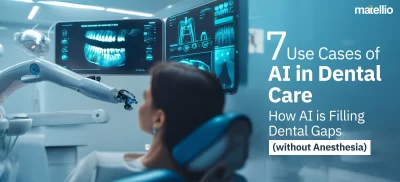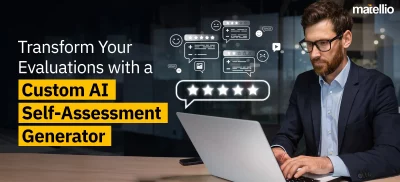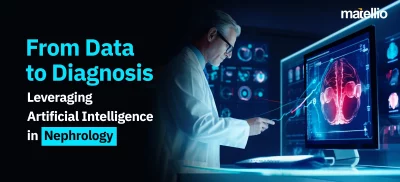
The sensory capabilities of humans still keep them a step ahead of the computers, making communication, creativity, and empathy-related tasks better performed by the former. However, some of the other things that hitherto had been considered more human-effective are slowly becoming an expertise of computer, not the last among that list being image recognition. An application of computer vision and artificial intelligence, image recognition is a function of detecting and identifying known images from an environment studded with other random images.
Mostly used in medical, surveillance, and automation-related jobs, image recognition as technology has become quite popular. In fact, the global image recognition market is projected to grow up to USD 86.32 billion by 2027! Businesses now are gearing up to become a substantial part of that figure, and we can help you do that for your business as well. But before that, let’s learn more about the technology and how it works.
What Is ML-based Image Recognition and How Does It Work?
ML-based image recognition, in simple terms, is a technology that classifies images from environment using special Artificial Intelligence (AI) algorithms. Such primary applications simply work on finding simpler objects/ geometrical shapes as separate from the environment, more advanced ones recognizing handwriting, places, human faces and their expressions.
Since the output required of the technology is quite advanced, it requires technology stack, and hardware components with as much precision. The camera device has to be able to capture and send images in speedy succession to the servers for real-time analysis. Moreover, greater the precision required, more should the camera’s quality. This runs in proportion of the bandwidth required by the capturing devices to send the images to the servers. This is why, when investing in an image recognition application, you should work with experienced AI/ML developers who understand the various aspects of the technology to save you time and resources.
The image recognition technology we’re discussing in this blog is ML-based, which means it will require training data, pre-tested models, and a neural network that continuously learns (supervised or unsupervised). We’ll now discuss each part of the process in more detail-
a) Collecting Training Data
ML-based image recognition applications require training data in the form of images and videos. The algorithm will need those classified as different categories to learn how each recognizable object is supposed to look like. For example, a sentiment analysis model will need numerous images of different human expressions to understand what is unique in all of them. This will eventually help them recognize similar expressions and classify them as per the training data.
b) Training of Neural Networks
Now, the training data will be fed to the neural network to help it learn the differences of the various categories. The network will then use the chosen model to learn differences. It will do so recursively to improve its accuracy rates. Once the analyst is assured of the model’s effectiveness, they can start using it to identify specific classes with different features.
c) AI Model Testing
Once the models are well trained, it will be time to test that learning by feeding similar but different data to the algorithms. This is done in order to ascertain the accuracy of the model before it is used in real-life applications. While testing, there are certain metrics more important than others, namely- incorrect identifications, accuracy per test image, etc. For this purpose, the analysts may create a confusion matrix and then derive the insights as per the requirement of the app. Some of the more widely used machine learning image recognition models, for both training and testing are-
- Support Vector Machines
- Bag of Features Models
- Viola-Jones Algorithm
- Faster Region-based CNN (Faster RCNN)
- Single Shot Detector (SSD)
- You Only Look Once (YOLO)
Top Use Cases of Image Recognition Applications
The effectiveness and need of ML-based image recognition applications is growing fast, thanks to its ability of automating procedures with better accuracy. The profitability of automation and improved confidence in outputs is news to no one. Therefore, if you’re looking for major use cases for IR in your industry, it is no wonder. Here we have enlisted some of them for you.
1.eCommerce
In eCommerce, image recognition is mostly used to improve the discoverability of products through advanced image search options and dynamic advertising. Businesses can use the tool to recognize the products users use and then advertise similar results. Although, this application is fraught with data privacy concerns, the leeway would be to allow customers to look up the products they want via image search themselves. Another interesting way eCommerce can use image recognition technology is by analyzing users’ expressions to then predict their sentiments and use the data to personalize their offerings for improvement in all the major KPIs, including customer retention, conversion rates, and acquisition cost.
2.Social Media
One of the first few instances of image recognition comes from popular social media platforms like Facebook, which opened up the technology for the public at large with its auto-detect photo-tagging feature way back in 2010. Since then, many social media platforms like SnapChat, Instagram, etc. have been using image recognition to correctly place filters on users’ faces. SnapChat even tried dynamic advertising with the technology by allowing users to point their phone cameras to brand products to unlock brand-specific AR experiences. Many such innovative solutions can help improve user engagement for brands and the platforms, opening up newer monetization streams.
3.Security
One of the most popular applications of IR technology is facial recognition for surveillance. The IR application can help the security industry to identify objects, missing people, suspects, etc., in real-time. This has been preventing crimes worldwide, helping increase confidence among people. In fact, the technology has been most heavily used by airports, so much so, that by 2023, 97% of airports will have rolled out facial recognition technology.
4.Medical Analysis
Medical communities also have been benefitting largely through image recognition technologies. Earlier, the technology was mostly used for medical imaging and detection of anomalies with better precision. But ever since the covid-19 pandemic, there are applications to predict and identify symptoms of diseases in people remotely. More often than not, these applications are more accurate than medical professions, picking out signs that they may overlook.
5.Gaming
The use of image recognition has been a boon to the gaming industry, opening up new floors for innovation. Actively being used in Augmented Reality games like ClickerBot, Honor of Kings, etc. The technology is responsible for the grand success of these highly popular games. It allows the users to overlay the gaming arena’s experience with real-life objects to offer a more realistic placement of in-game components to the users.
6.Inclusive educational system
Image recognition takes the education experience beyond the classroom boundaries, especially for students with learning disabilities like Dyslexia, the technology can be used to register images with text, and then turn it into audio format to help students with reading concerns.
7.Self-driving cars
Autonomous vehicle is yet another area where image recognition technologies are used massively. To avoid accidents, overtake easily, drive efficiently, and even recognize objects more precisely, require advanced image recognition algorithms. Driver less automobile companies are constantly working on improving their safety features by actively ameliorating their computer vision capabilities. By trying such autonomous cars on varied terrains, the companies are trying to train their ML models for variety of obstacles to market their products available to a larger area.
8.Manufacturing
Image recognition works well for manufacturers too. With IR, it is easy to count items inside a package, recognize misshapen packaging in bulk of stock, and pick out spoiled raw material from the carousal, with no human efforts. Not only that, the IR can also be used to keep track of the machinery’s health, quickly alarming the administration in case of cautionary wear to prevent accidents and maintenance downtime by being prepared well-in-time. Another useful application for manufacturing units is the search of misplaced items. The drones embedded with image recognition-enabled cameras can peruse the entire perimeter to locate lost items in time.
Benefits of Incorporating Image Recognition into Your Business
From bringing more efficiency in your workflows to more accurate results of operations, image recognition is benefitting business of all scales in achieving their short-term and long-term goals more effectively.
Increased Productivity
With image recognition comes the advanced capabilities of cognitive automation. Earlier the tasks that required humans to monitor the process, can now easily be automated without any human presence at all. Like reading OCRs, symbols, texts, etc. The machines can decide for themselves what needs to be done with specific products, raw materials, processing goods, packaging, etc., to then automate their usage in the operations. This ultimately leads to improvement in productivity, which thanks to improved computer-vision-led accuracy leads to perpetual growth in high-quality outputs.
Deal with Security Threats
Image recognition software quickly alarm businesses in case it detects any suspicious activity, object, or person. This will help businesses of all sectors in improving their security to improve their reliability too down the line. But image recognition isn’t just limited to real-life security threats. It is as effective in dealing with cybersecurity threats as well. The program can carefully analyze customers’ texts, emails, etc., to detect and evict any kind of cybersecurity threat. This helps companies prevent any kind of system or server failure originating from image with threats.
Streamline Authentication-related Process
Authentication is an important part of multiple business processes. It’s important for companies to implement proper care with these processes after all a lot of security aspects depend on them. That being said manual identification can take up a lot of time, creating avoidable bottlenecks in regular operations. This is where image recognition enters the picture. The technology can help streamline all those processes by authenticating multiple personnel simultaneously, without any efforts at all from their end. What more? This will further prevent cases of fraud, allowing with surgical precision only authenticated people to involve in secured processes.
Enhanced Recruitment Processes
Image, more specifically facial recognition, can help employers know more about different candidates through reverse image search. They can pick images of the employees from their LinkedIn profile or Resumes, and search the same on different social media platforms, forums, and online communities to know more about them. This will give recruitment team a deeper insight on the candidate, about their interests, likes, dislikes, and then level that with the company’s culture and values.
Protect Digital Assets
With the advent of NFT and overall increase in the use of graphics as the chosen form of content has made it easy for people to find ways to use protected digital assets without creators’ permission. This can be easily avoided through the image recognition technology. The companies can implement and plan regular web scans to detect if anyone is using their digital assets online without their permission. Doing so manually would have taken these companies forever to find such misuse of their assets but with the IR application they can easily automate the task.
Conclusion
While image recognition technologies might sound like advanced technologies, they are already being widely used by different industries. Dating back to over a decade, the technology has many use cases, across sectors, and is known for helping businesses of all scales already. If you too have an innovative idea to invest in the technology to improve your businesses processes, your client’s businesses growth, it just an idea for a startup, you can just as easily book a free consultation call with our experts. While booking the call, simply share your requirements and details with the experts and then they will discuss the entire idea, the feasibility of features, and eventually share a project plan and free quote.





